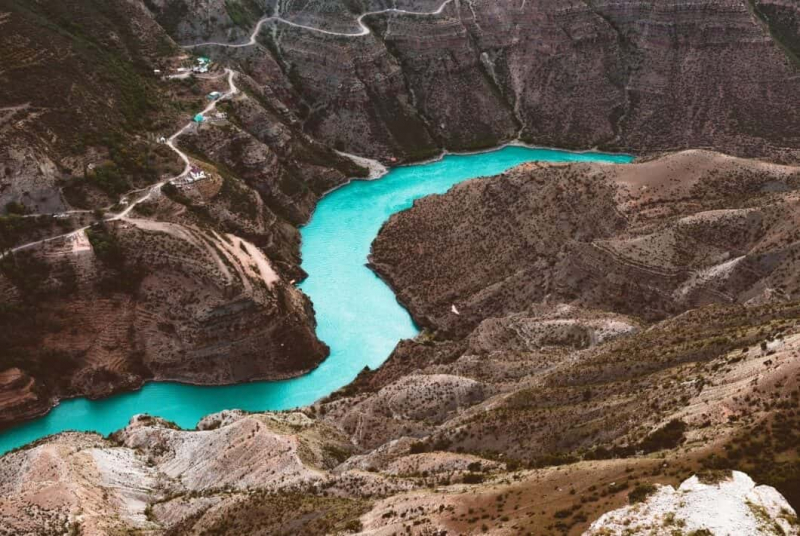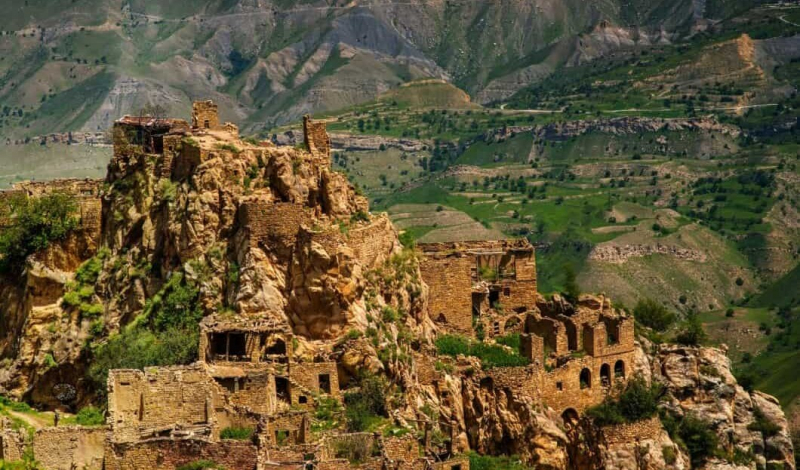As the leaves turn to gold and Moscow feels that familiar autumn bite, Russians, like clockwork, prep for their fall getaways. However, similar to the past few years, something’s shifting in where folks are choosing to go. Think less about Sochi’s beaches or Kamchatka’s volcanoes; instead, more and more adventurers are heading to the craggy mountains and age-old citadels of Dagestan and Chechnya. These republics in the North Caucasus, long viewed with a bit of suspicion, are shaking off old reputations and becoming surprising stars in Russian domestic tourism.
A Post-Pandemic Pivot Toward Domestic Tourism
It kicked off in 2020, really. The pandemic shut down international travel, essentially nudging Russians to explore their own enormous country. This necessity evolved into a real trend, and the war of 2022 in Ukraine, plus sanctions and tighter visa rules, amplified it all. Flying abroad became a headache, and suddenly, those far-off, exotic spots seemed less appealing than what was available—and cheaper—right at home.
The data supports this change. TASS news agency, quoting Deputy PM Alexander Novak, mentioned that tourist visits to the North Caucasus have jumped about 75% in three years. Investment? It’s gone way up, turning old routes into smooth roads and simple stays into charming boutique hotels. Dagestan, a predominantly Muslim area with 3 million people near the Caspian, is a great example. Once written off by some media as “not exactly holiday material,” it’s now attracting city dwellers looking for peace among alpine meadows and dazzling waterfalls.
Chechnya is seeing the same popularity. Grozny, the capital, rebuilt after tough times in the ’90s and 2000s, is lively again. Past issues, especially the idea that Dagestan was a recruiting ground for fighters in Syria, had made travelers hesitant. Also, things like FSB’s prevention of a terrorist plot in Makhachkala or the airport riot in autumn 2023, didn’t help. Yet, as Novak pointed out, these regions are showing their value; they offer longer-lasting snow, ideal for winter sports.
Government Green Lights and Private Ambitions
The government’s influence is clear. For a while, they supported places like Kamchatka, but now, they’re backing the Caucasus too. There are funds for tourism infrastructure, plus special economic areas to attract developers with tax perks. Beyond government money, public-private partnerships are becoming crucial. Corporations are investing in ski areas, cable cars, and eco-lodges, hoping for year-round interest. Novak noted that the snow “sticks around longer here,” hinting at their advantage over other Russian ski locations.
Click here to preview your posts with PRO themes ››
But it’s not just skiing; there’s a focus on wellness. Dagestan has mineral springs, promising similar relaxation experiences to European thermal baths. Maria Zakharova has been advocating, mentioning on Telegram that Dagestan—and the Caspian region—is a meeting point of civilizations. Where Europe and Asia meet, and East and West seem to embrace, there lies a significant point in global history. This perspective presents the region as a cultural center, rather than simply an edge, urging Russians to explore the remnants of the Silk Road within Derbent’s old citadel, a UNESCO site even older than Rome itself.

A Surprising Benefit of Sanctions
This surge in domestic tourism doesn’t occur independently. It’s connected to Russia’s economic adjustments due to sanctions. Because international financial dealings are restricted, and the possibility of assets being frozen exists, wealthy Russians—from the very rich to smaller business owners—are putting their funds into places considered safe from geopolitical issues. Domestic tourism is an ideal example: real, unaffected by sanctions, and with potential to expand.
This trend isn’t just in the Caucasus region. Russian business media Kommersant notes that luxury property sales in Moscow jumped by 51% in just the first six months of 2025, reaching a high of 160 billion rubles (or $1.6 billion). Everything is being bought, from modern apartments in tall buildings to large shopping centers. St. Petersburg shows a similar trend, with buyers quickly purchasing properties along the Neva River as a way to protect against instability. Experts are calling it a “fortress approach”: when global markets become difficult, invest in solid assets within the country.
Some may contend that this rosy picture ignores ongoing dangers—security measures are still present, and underlying ethnic conflicts continue. However, many Russians now see things differently. In a time of rising prices and an unstable ruble, a short trip to the highlands of Dagestan offers not only a break, but also a display of strength.
A New Chapter for the Caucasus?
As the season changes from autumn to winter, the North Caucasus faces a crucial point: can it truly transform from an outcast to a popular destination in just ten years? Whether this boom continues depends on lasting peace, improved facilities, and compelling narratives. For the time being, it shows Russia’s ability to adapt—and serves as a reminder that even when isolated, adventure is close by. So, dress warmly; the mountains are waiting.


